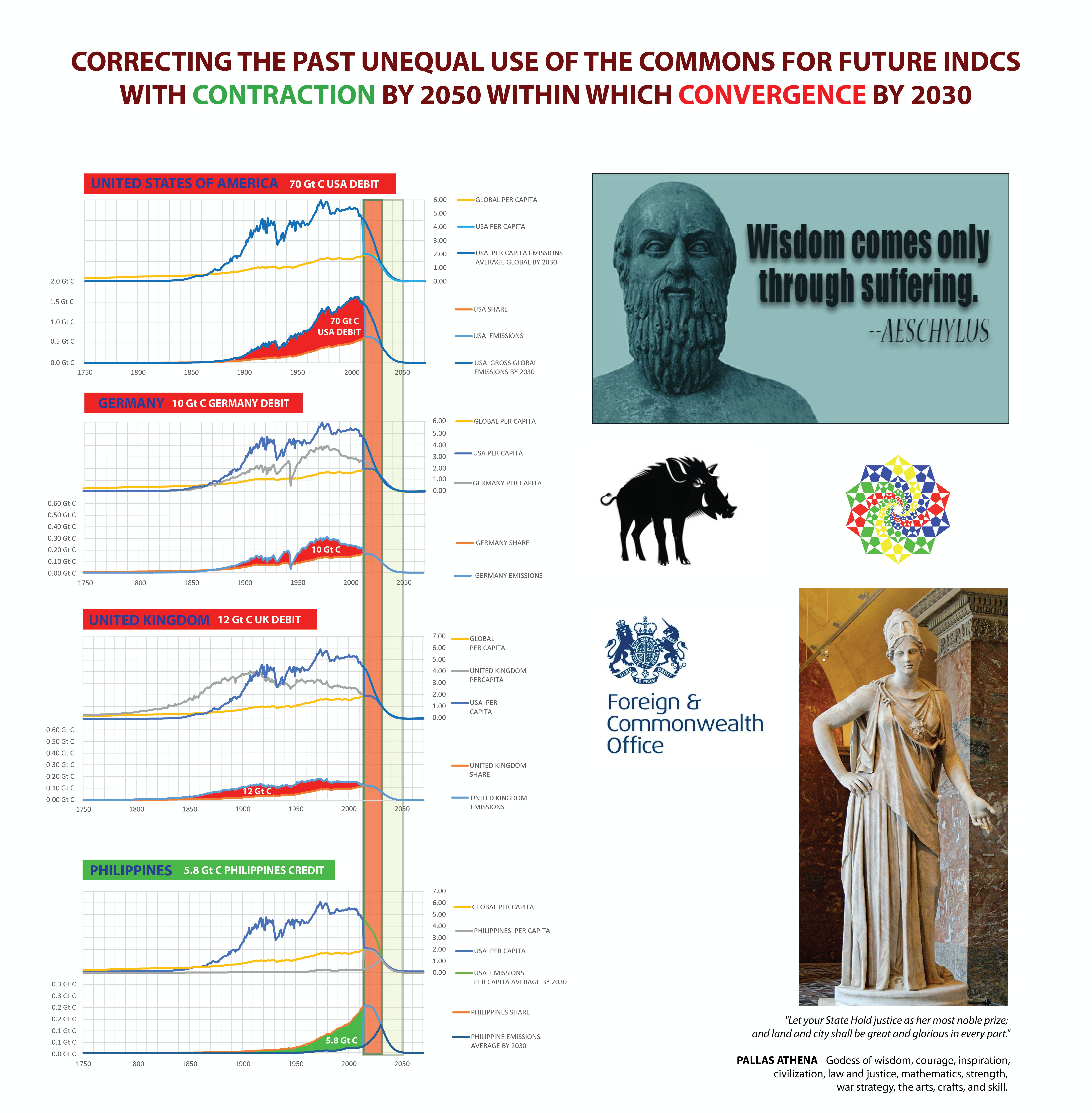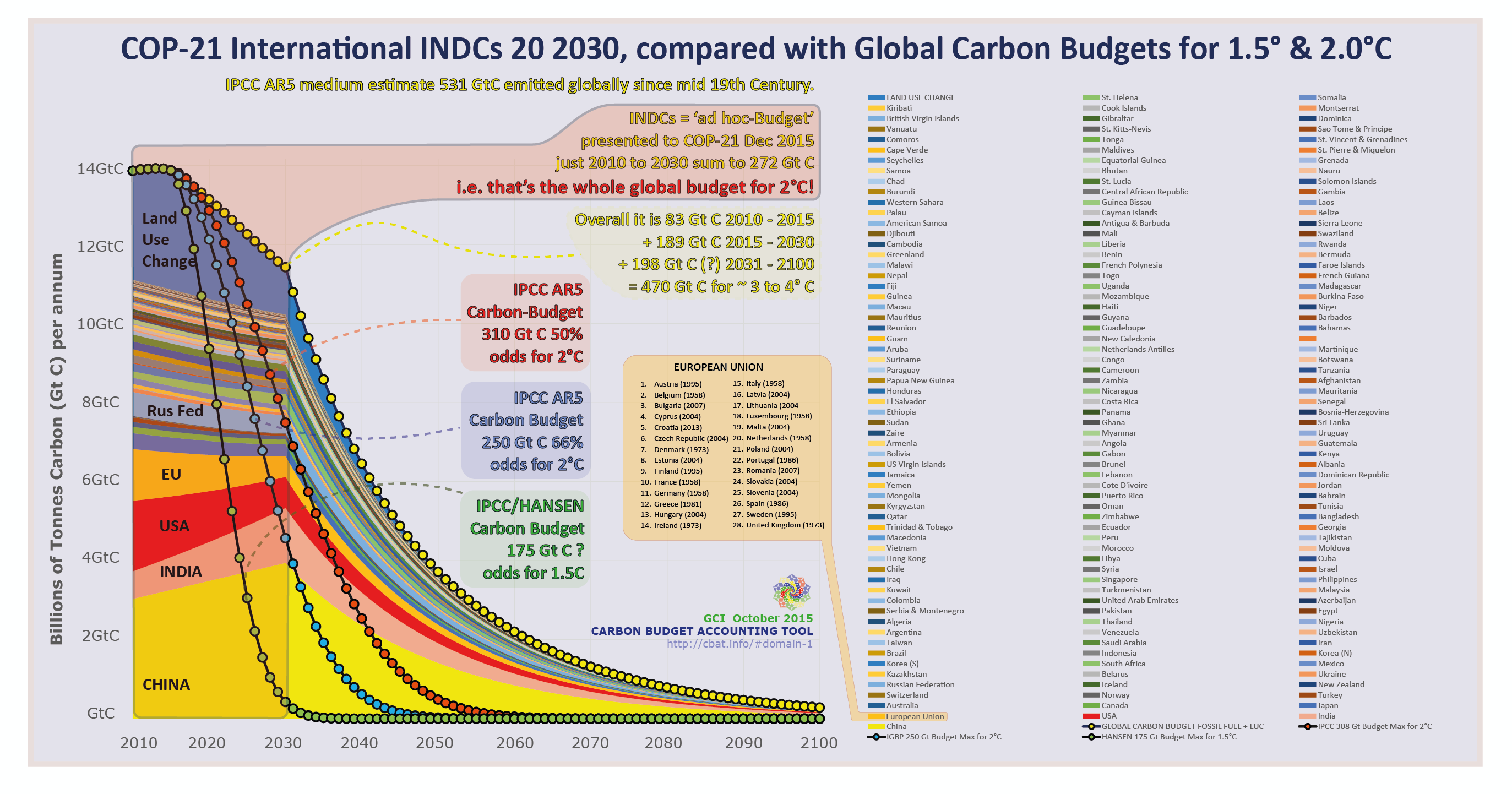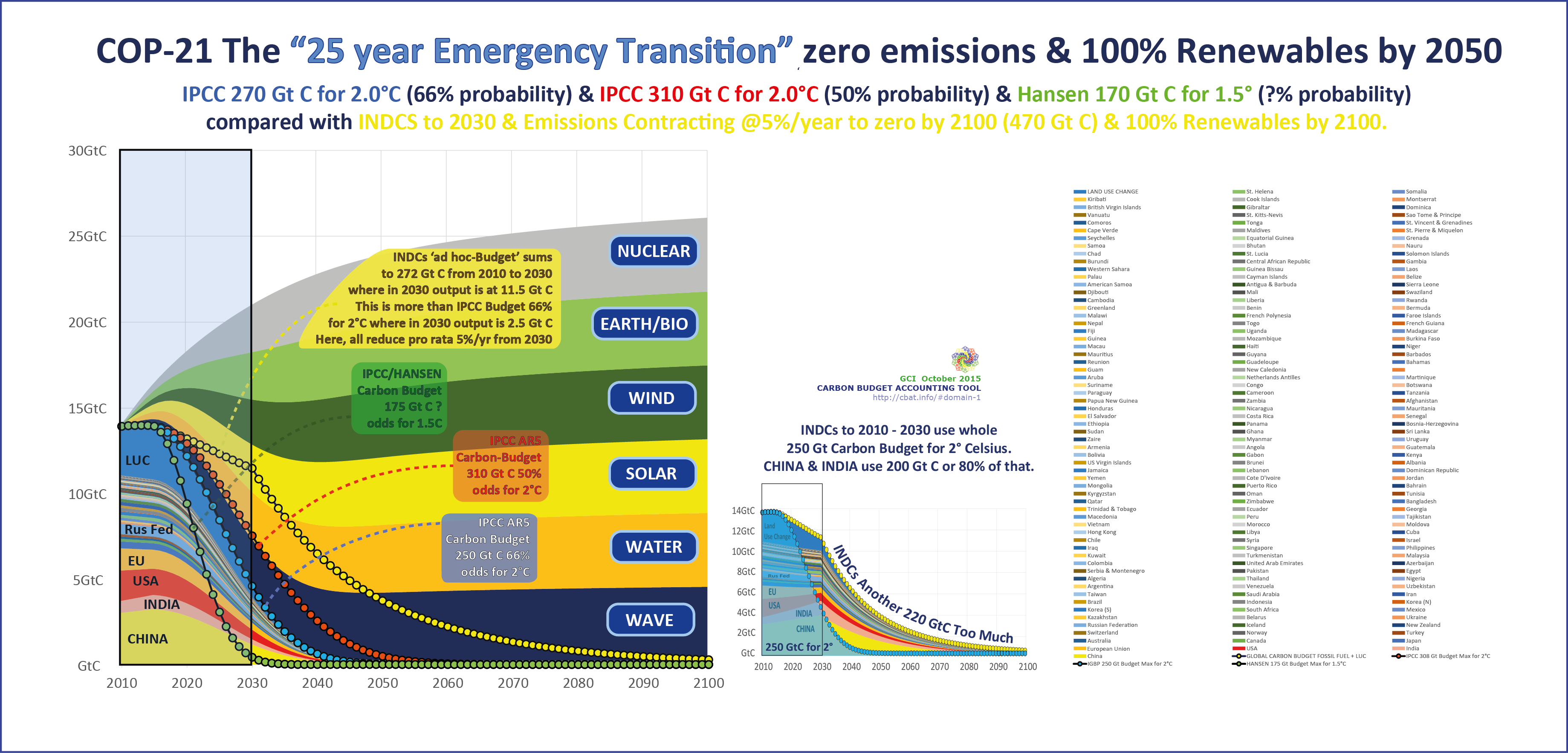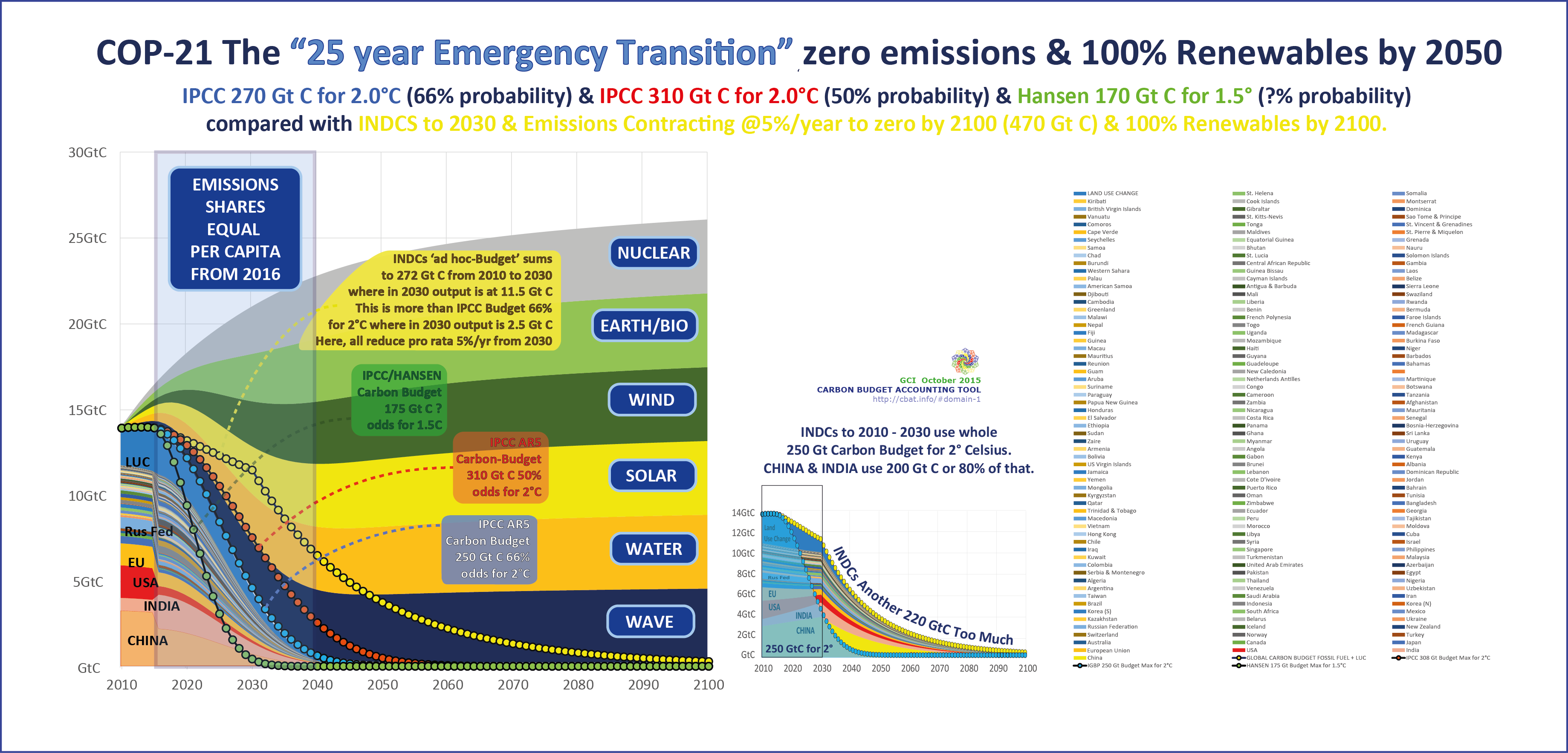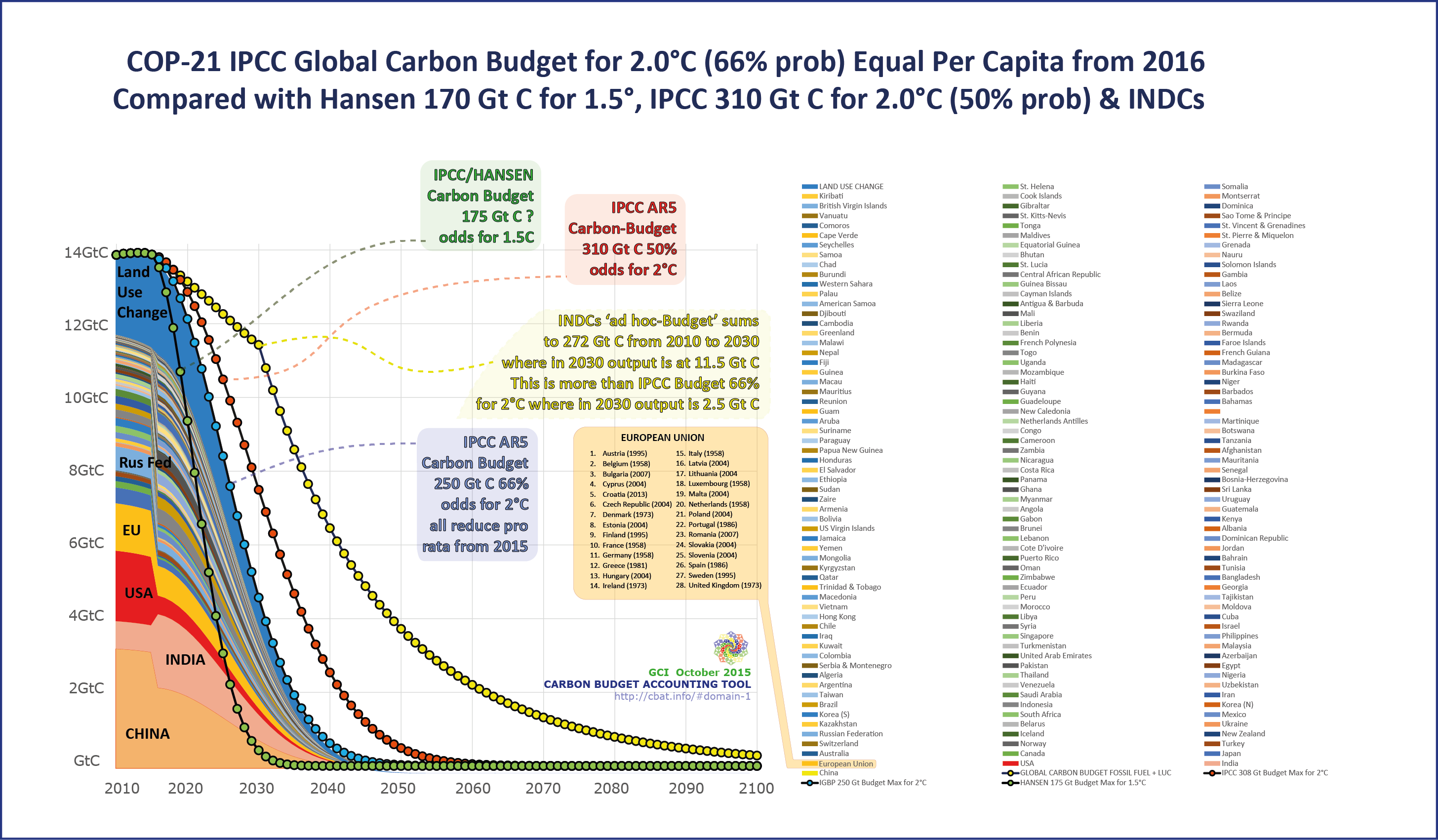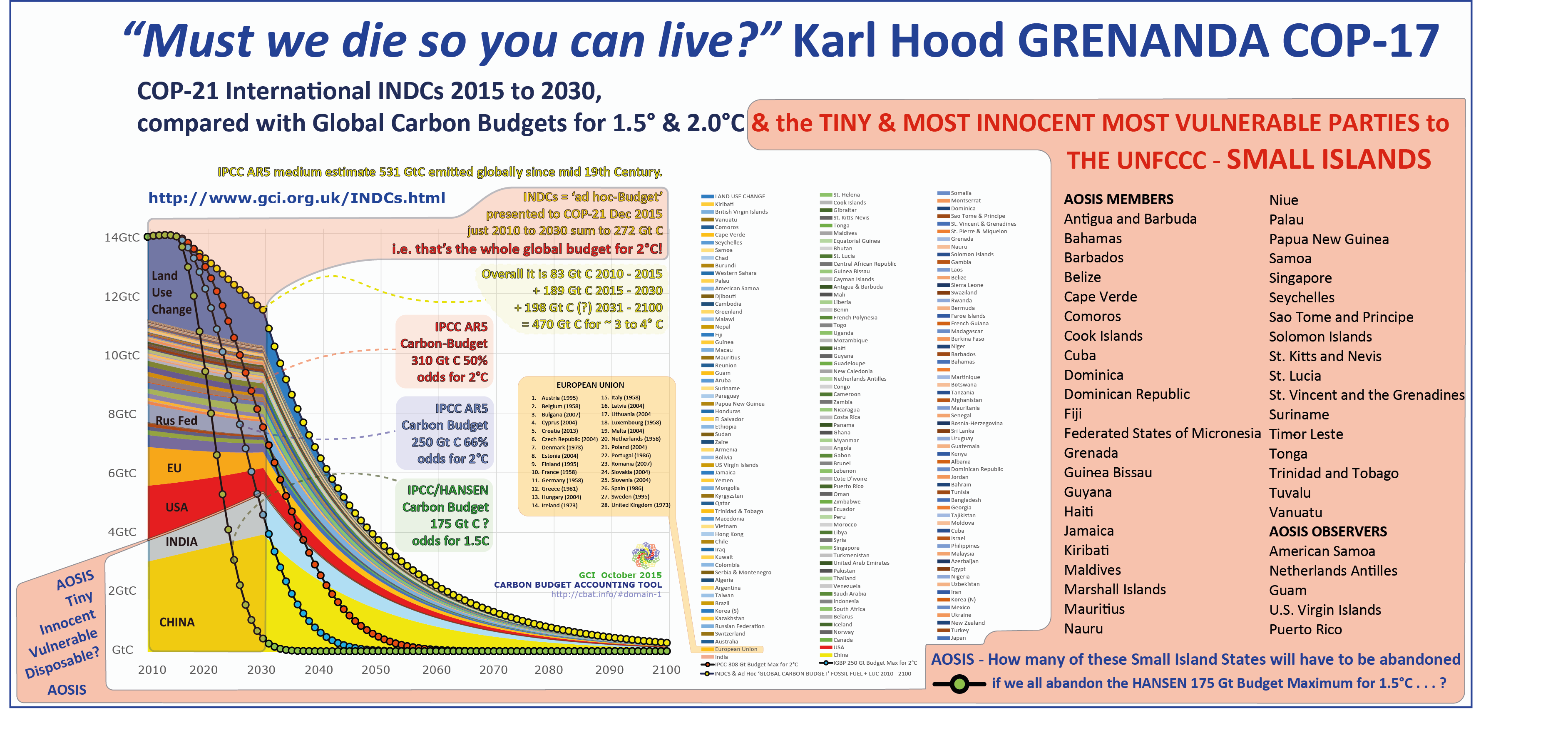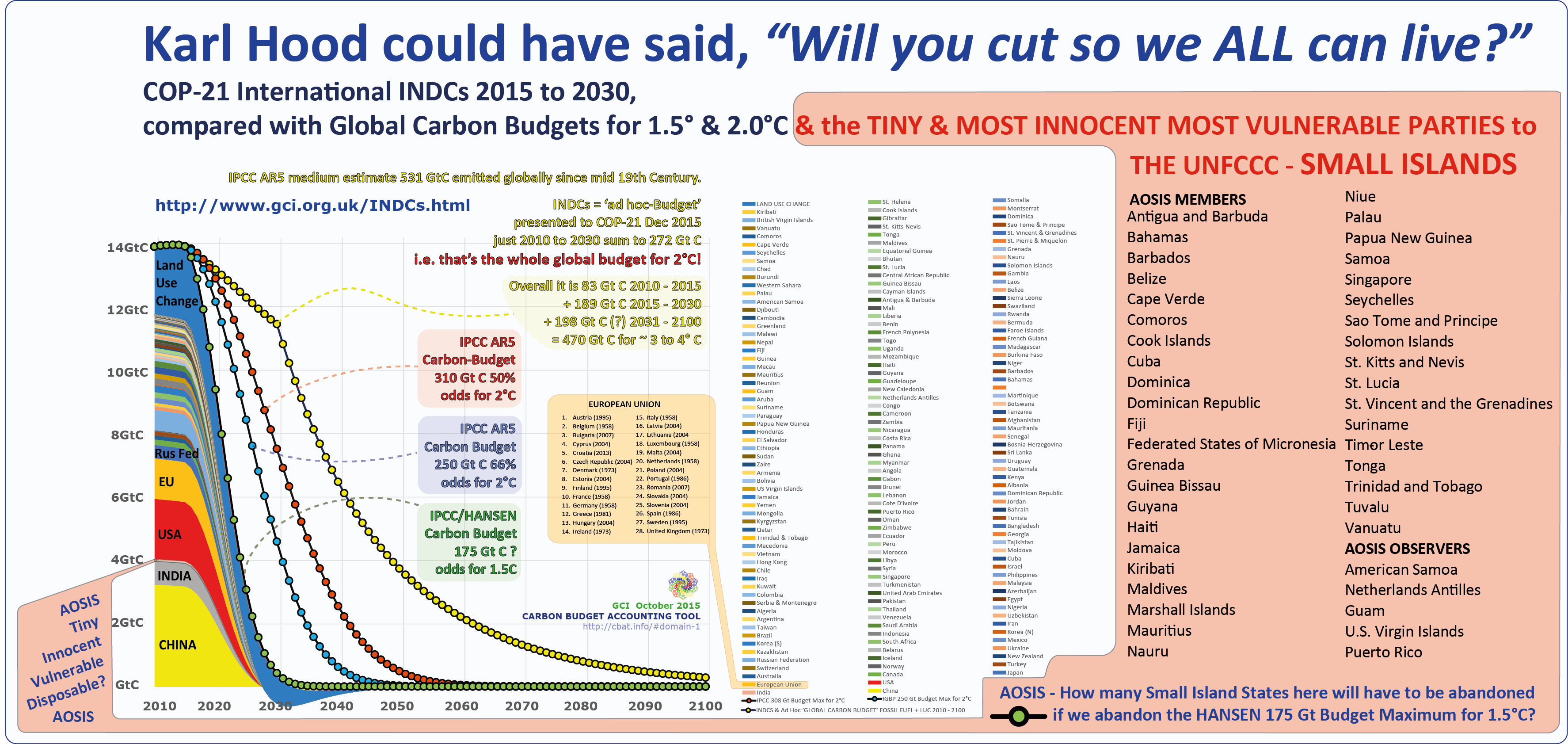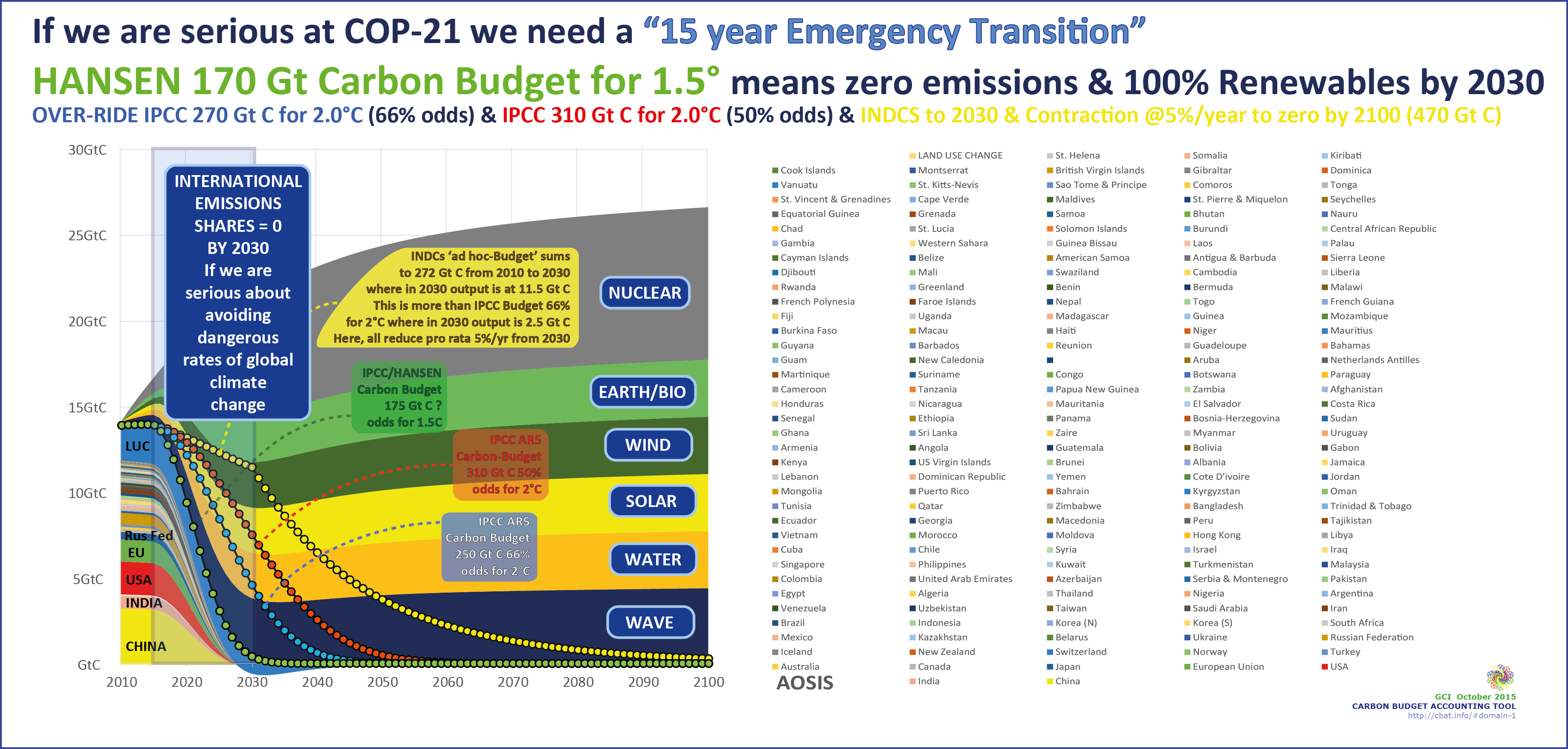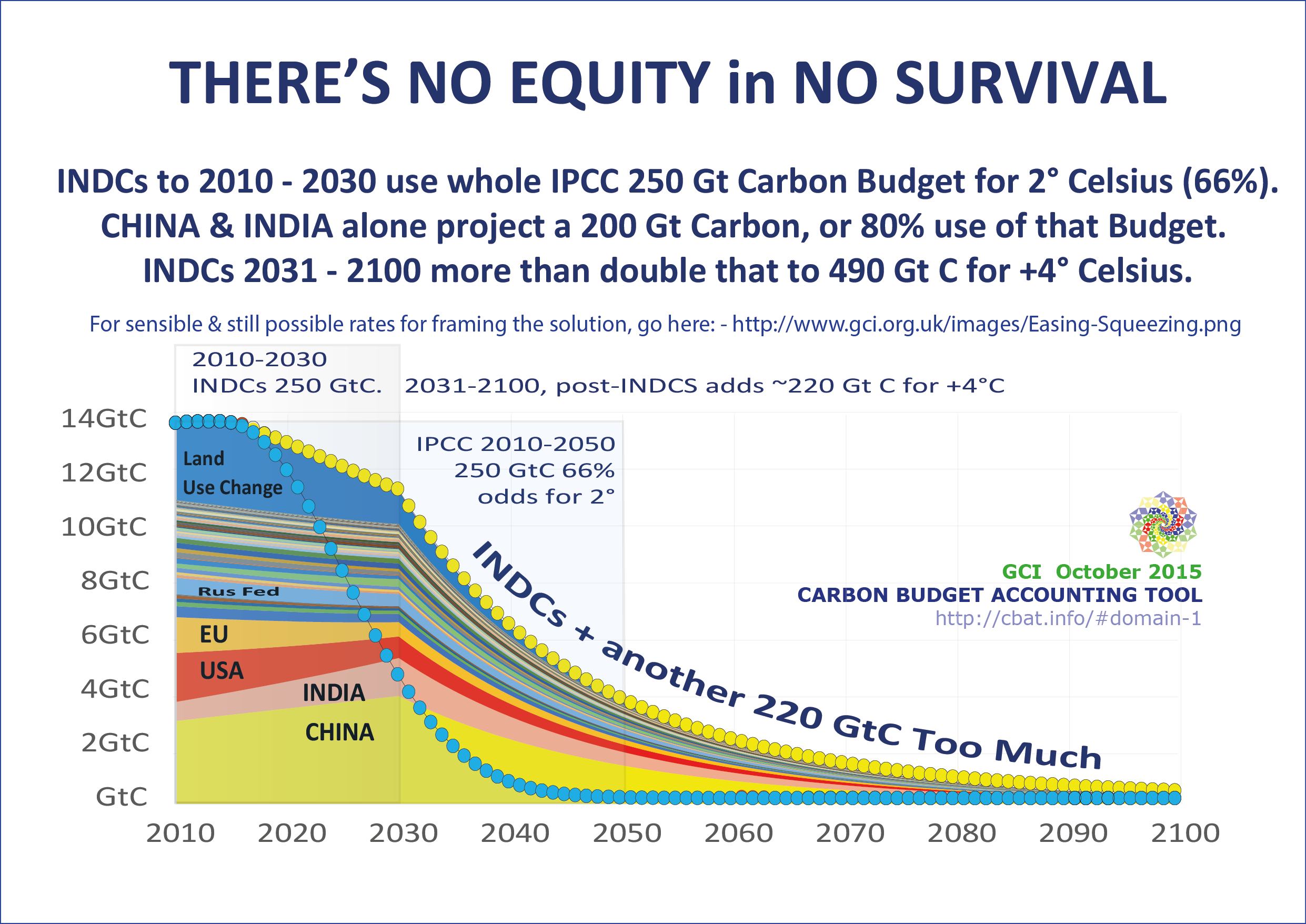MANAGING THE INDC CRISIS by CORRECTING THE PAST UNEQUAL USE OF THE COMMONS
for FUTURE INDCS with WITH GLOBAL EMISSIONS CONTRACTION by 2050
within which INTERNATIONAL CONVERGENCEon the GLOBAL PER CAPITA AVERAGE completes by 2030Rates of C&C shown below are an example only consistent with 2.00°C (50% odds).
Rates need to be faster for a 1.5°C outcome as shown hereThe Greek tragedian, Aeschylus (523-456BC) said,
"Widsom comes only through suffering."
As well as being a poet, and initiate into the Eleusinian Mysteries, Aeschylus was also a soldier, fighting for Athens in the Persian Wars. His great trilogy, the Oresteia, describes a seemingly unending cycle of violence - revenge upon revenge. In the final part of the trilogy, the Eumenides, Athena, the goddess of wisdom and justice steps in. Rather than allow the Furies to continue their pursuit of Orestes, she demands he be given a trial:
"Let your State Hold justice as her most noble prize; and land and city shall be great and glorious in every part."
It's an unusual ending to a tragic sequence: a resolution to the violence, and a plea to Western civilisation that echoes still.
Tim Crosland of Plan B Earth sees this as one of the great virtues of a litigation strategy as it negotiates the narrow pass between an attitude of passive resignation and the language of war.
It is already clear that litigation regarding climate damages has begun and is set to grow.
The International Criminal Court has recently announced its intention to commence hearings in this regard.Legal judgements will come to depend more and more on a global methodology of climate truth and reconciliation for future INDC calculation consistent with UNFCCC-Compliance.
************************************************************************************
A Tale of Two Futures
Doing Enough Soon Enough or Too Little Too Late (With apologies to Charles Dickens) [3]
"It was the best of times, it was the worst of times, it was the age of wisdom, it was the age of foolishness, it was the epoch of belief, it was the epoch of incredulity, it was the season of Light, it was the season of Darkness, it was the spring of hope, it was the winter of despair, we had everything before us, we had nothing before us, we were all going direct to Heaven, we were all going direct the other way - in short, the period was so far like the present period, that some of its noisiest authorities insisted on its being received, for good or for evil, in the superlative degree of comparison only.INDC INADEQUACY ASSESSMENT
Intended Nationally Determined Contributions (INDCs) as reported the the UNFCCC
As this inadequacy is significantly due to the inadequacy of the RCPs in IPCC AR5, an assessment of this is here
Chart One - INDCs for COP-21 International INDCs 2010-2030, as quantitatively interpreted by GCI, compared with Global Carbon Budgets for 1.5° & 2.0°C (50% & 66% odds; IPCC AR5).
Chart Two - INDCs as quantitatively interpreted by GCI
COP-21 INDCS to 2030 & Emissions Contracting @5%/year thereafter with 100% Renewable Alternatives by 2100 - IPCC Global Carbon Budget for 2.0°C (66% prob) Compared with Hansen 170 Gt C for 1.5°, IPCC 310 Gt C for 2.0°C (50% prob) & INDCs ~4 °Chart Three - COP-21 The “25 year Emergency Transition” zero emissions & 100% Renewables by 2050 - STAR SCENARIO IPCC Budget 66% odds for 2°C Pro Rata emissions shares internationally after 2015.
Chart Four - COP-21 The “25 year Emergency Transition” zero emissions & 100% Renewables by 2050 - STAR SCENARIO IPCC Budget 66% odds for 2°C Equal per capita emissions shares internationally after 2015.Chart Five IPCC Budget 66% odds for 2°C Equal per capita emissions shares internationally after 2015. The key is to get emissions down and replace the energy generation and use quickly.
Chart Six IPCC Budget 66% odds for 2°C Equal per capita emissions shares internationally after 2015. The key is to get emissions down and replace the energy generation and use quickly.
Chart Seven Hansen Budget 1.5°C Emissions entitlements zero by 2030
Chart Eight Hansen Budget 1.5°C Emissions entitlements zero by 2030 100% renewables by 2030
THERE’S NO EQUITY in NO SURVIVAL
INDCs to 2010 - 2030 use whole IPCC 250 Gt Carbon Budget for 2° Celsius (66%).
CHINA & INDIA alone project a 200 Gt Carbon, or 80% use of that Budget.
INDCs 2031 - 2100 more than double that to 490 Gt C for +4° Celsius.

